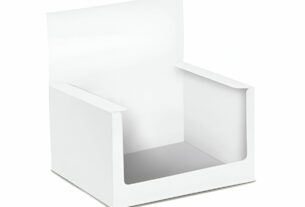Whether you’re a seasoned artisan or just starting your journey as a maker of handmade products, one of the most crucial aspects of presenting your creations to the world is through effective labeling.
Handmade product labels not only provide essential information but also convey your brand’s identity and commitment to quality.
In this article, we’ll guide you through the process of creating these labels, with a focus on professionally printed options while including a DIY section for those who prefer hands-on crafting.
Why Handmade Product Labels Matter
Handmade product labels serve multiple purposes, each contributing to the success of your brand:
Identification: Labels help customers quickly recognize your products on the shelf or online, making it easier for them to return for more.
Information: Labels provide important details such as product name, ingredients, usage instructions, and care recommendations. This information builds trust with customers.
Brand Identity: A well-designed label reflects your brand’s personality and values. It contributes to your unique identity and differentiates you from competitors.
Professionalism: Professionally printed labels convey a sense of professionalism and quality. They reassure customers that they’re purchasing a well-crafted product.
Legal Compliance: Depending on your industry, there may be legal requirements for labeling, including allergen information, safety warnings, and ingredient lists.
Creating Handmade Product Labels: DIY Approach
For those who prefer a hands-on approach, here’s a simple DIY method for creating handmade product labels:
Materials You’ll Need:
- Blank Labels: Purchase blank label sheets designed for printing. They come in various shapes, sizes, and finishes. Consider labels with adhesive backing for easy application.
- Printer: Use an inkjet or laser printer depending on the type of label sheets you’ve chosen.
- Design Software: You can use graphic design software like Adobe Photoshop or Illustrator. Alternatively, free tools like Canva or Word can be suitable for basic label design.
- Design Elements: Incorporate your logo, product name, ingredients, usage instructions, and any other information you want to include on your labels.
- Images or Illustrations: Depending on your product type, you may want to include images or illustrations that showcase your product or brand.
Steps to Create Your Label:
- Design Your Label: Use your chosen design software to create a label template. Include all necessary information and design elements. Make sure the design is visually appealing and consistent with your brand identity.
- Print Test Labels: Before printing a large batch, print a few test labels to check the layout and colors. Adjust as needed to achieve the desired look.
- Load Label Sheets: Load your blank label sheets into your printer according to the manufacturer’s instructions.
- Print Labels: Print your labels, making sure the quality and color accuracy are satisfactory.
- Cut and Apply: Carefully cut out each label, leaving a small border if necessary. Apply the labels to your products, ensuring they are centered and securely adhered.
- Protect the Labels: Depending on your products and usage, consider protecting your labels with clear adhesive label protectors or laminating sheets.
While the DIY approach can be cost-effective, it’s essential to invest in high-quality label sheets and ensure the design aligns with your brand’s identity.
Going Professional: Professionally Printed Handmade Product Labels
While the DIY approach is suitable for small-scale operations or when you’re just starting, professionally printed labels offer several advantages, especially as your business grows:
Quality and Consistency: Professional printing services provide high-quality, consistent results. Colors are accurate, and the finish is durable.
Versatility: You have a wide range of options for label materials, sizes, and finishes, allowing you to choose what best suits your products.
Time Efficiency: Professional printers can handle large quantities, saving you time compared to printing labels one by one.
Customization: You can work with professional designers to create unique label designs that align perfectly with your brand identity.
Compliance: Printing companies are often well-versed in labeling regulations, ensuring your labels meet legal requirements.
Here’s how to create professionally printed handmade product labels:
Steps to Expect:
Find a Label Printing Service: Research and select a reputable label printing service. Look for companies with experience in your industry.
Design Your Label: Collaborate with a graphic designer to create a visually appealing label design that reflects your brand. Ensure it includes all necessary information and aligns with your brand identity.
Choose Label Material and Finish: Work with the printing service to select the right label material and finish. Match this with your product. For example, flexible plastic film is best for custom lip balm labels that need to wrap around the tube, while clear, foil-stamped labels work great to elegantly showcase bottles and jars for custom candle labels.
Printing and Proofing: The printing service will provide you with proofs to review. Carefully examine the proofs for accuracy in design, color, and information.
Order in Bulk: Place an order for a significant quantity of labels. Buying in bulk is often more cost-effective, and it ensures you have a steady supply.
Application: Once you receive your professionally printed labels, apply them to your products. Ensure proper alignment and secure adhesion.
Quality Control: Regularly check the quality of your labels to ensure they maintain their appearance and adhere properly.
Aromatherapy Handmade Soaps
Let’s consider a case study of a small business that makes handmade aromatherapy soaps. Initially, the business owner created DIY labels using basic design software and blank label sheets. As the business expanded, they realized the need for professional printed labels:
DIY Labels
The business owner used a DIY approach to create labels for their soaps, including the product name, ingredients, and a simple logo. While this was cost-effective in the beginning, it became time-consuming as the business grew.
Professional Labels
As the business gained popularity, the owner decided to invest in professionally printed labels. They collaborated with a designer to create visually stunning labels that showcased the elegance and natural ingredients of their products. The professional printing service provided durable, high-quality labels with accurate colors and a waterproof finish, ensuring the labels maintained their appearance even in wet conditions.
The shift to professionally printed labels not only improved the presentation of the products but also contributed to the brand’s credibility and appeal. The labels met legal requirements and could be ordered in bulk, saving time and money.
In Conclusion
Creating handmade product labels is a critical part of presenting your products to the market.
While a DIY approach can be suitable for small-scale operations, as your business grows, investing in professionally printed labels becomes a more practical and advantageous choice. Professionally printed labels offer quality, consistency, and customization, contributing to your brand’s credibility and success.
Whether you choose to DIY or opt for professional printing, make sure your labels align with your brand identity and communicate important information to your customers.




